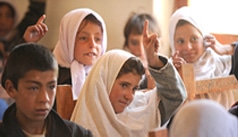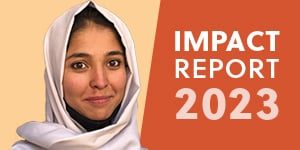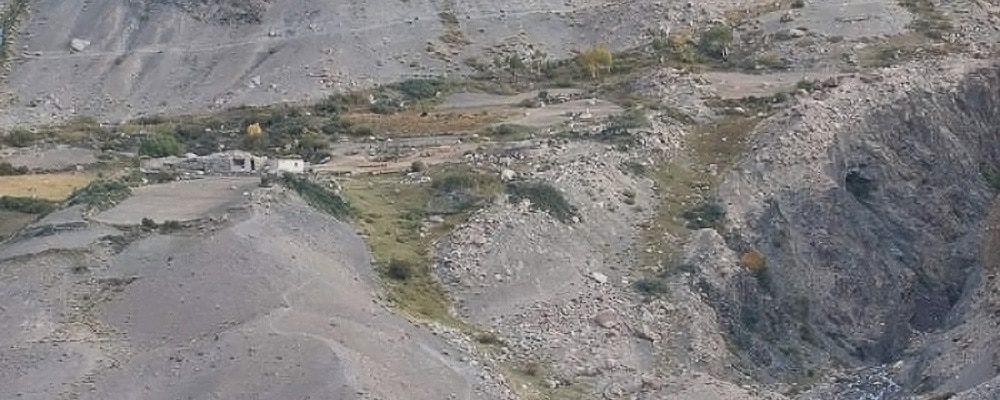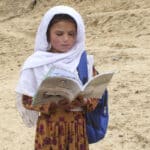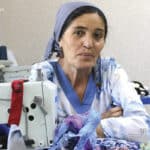PART II: Crippling Drought Grips War-Torn Afghanistan
Last week, Alice Thomas spoke with us about the ongoing drought that has taken hold of Afghanistan. In part two of the conversation, she explains the direct impact of drought on education and migration.
Hannah White (HW): What do our readers need to know about drought and education?
Alice Thomas (AT): It’s challenging enough for girls to get to school in rural Afghanistan, but in times of drought it becomes harder for them. And it becomes so much more important to have more robust funding for education to help cover families’ out-of-pocket costs in times of drought.
When I was in Zimbabwe during a severe drought in 2015, mothers were telling me that the reason they weren’t sending their kids to school was because they had to use what little income they had to buy food since their own crops had failed. They didn’t have any extra to pay for their children’s uniforms for school, or to buy their own supplies. In addition, schools there do not provide lunch, so kids were staying home because they were literally too tired to go to school, and parents couldn’t buy the supplies. For these reasons, drought can have really direct and harmful impacts on education.
HW: In sub-tropical climates, like Jalalabad on Afghanistan’s eastern border, the heat can be unbearable and access to water is often limited. How does this affect women?
AT: The heat is really oppressive for women in societies that practice purdah [the practice among women in certain Muslim and Hindu societies of living in a separate room or behind a curtain, or of dressing in all-enveloping clothes, in order to stay out of the sight of men or strangers] because they have to be inside and they have to be separated and they have to be covered. This was a big issue during the 2010 Pakistan floods. When I was there, humanitarian groups had set up an IDP [internally displaced persons] camp near [the town of] Sukkur. It was like 103 degrees and they provided tents that were really hot, and women had to stay in tents because they weren’t allowed to walk around the IDP camp. They just hadn’t thought about the fact that if you’re spending all day in the plastic tents it was unbearable for women.
HW: When people sell their animals, have no crops, and own land that is basically unusable, do they move to cities?
AT: Yeah, obviously you see migration happening. But you also see displacement happening in drought, although it takes more time….Literally because of the reasons you just described people have to go somewhere else to get assistance.
Where there is both drought and conflict, the situation is particularly bad because the conflict makes it harder for humanitarians to get to where the people in need are. So people have to displace . . . they have to leave that place and go to safer areas in order to get assistance.
And once people are displaced they face a whole other range of protection risks. They live in displacement camps. Women have lots of risks when they are displaced. You can have family separation, where the husband will stay behind, and the wife and children will go to the camps. It’s very disruptive on people’s livelihoods and affects their protection and security and that happens a lot in conflict situations.
Generally, during drought, you’ll also see higher levels of migration. People have to move, and it becomes a form of distress migration. It’s not like they’re moving somewhere where there’s more economic opportunity. They’re moving because they can’t stay where they are. That makes them vulnerable.
HW: I can imagine if you go to a Mazar-i- Sharif or Kabul, those urban areas are being flooded by people fleeing the conflict. Now you add people fleeing drought. I’m sure the infrastructure is being completely overwhelmed.
AT: Yes, I mean people end up just living in informal settlements and they don’t have access to services. So, you know, it just adds to the urban woes, right? There can be all kinds of discrimination against people that are coming in from the countryside during drought time. And all kinds of exploitation and abuse, exploitative labor practices, everything that you can imagine.
* Some answers were edited for length.
Learn More:
BROOKINGS: Is climate change the weakest link in girls’ education programming?
